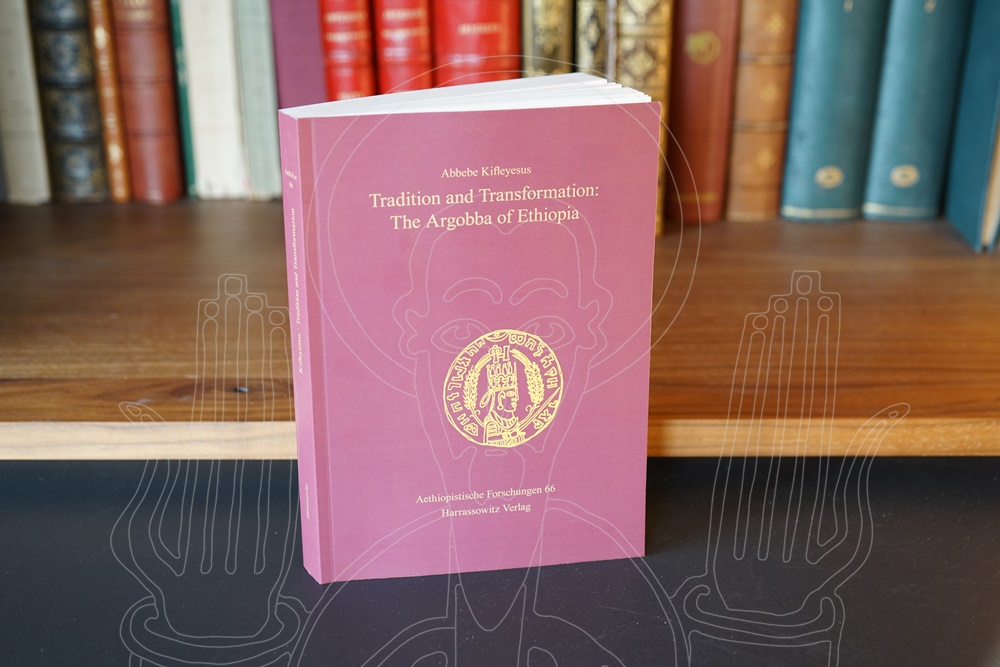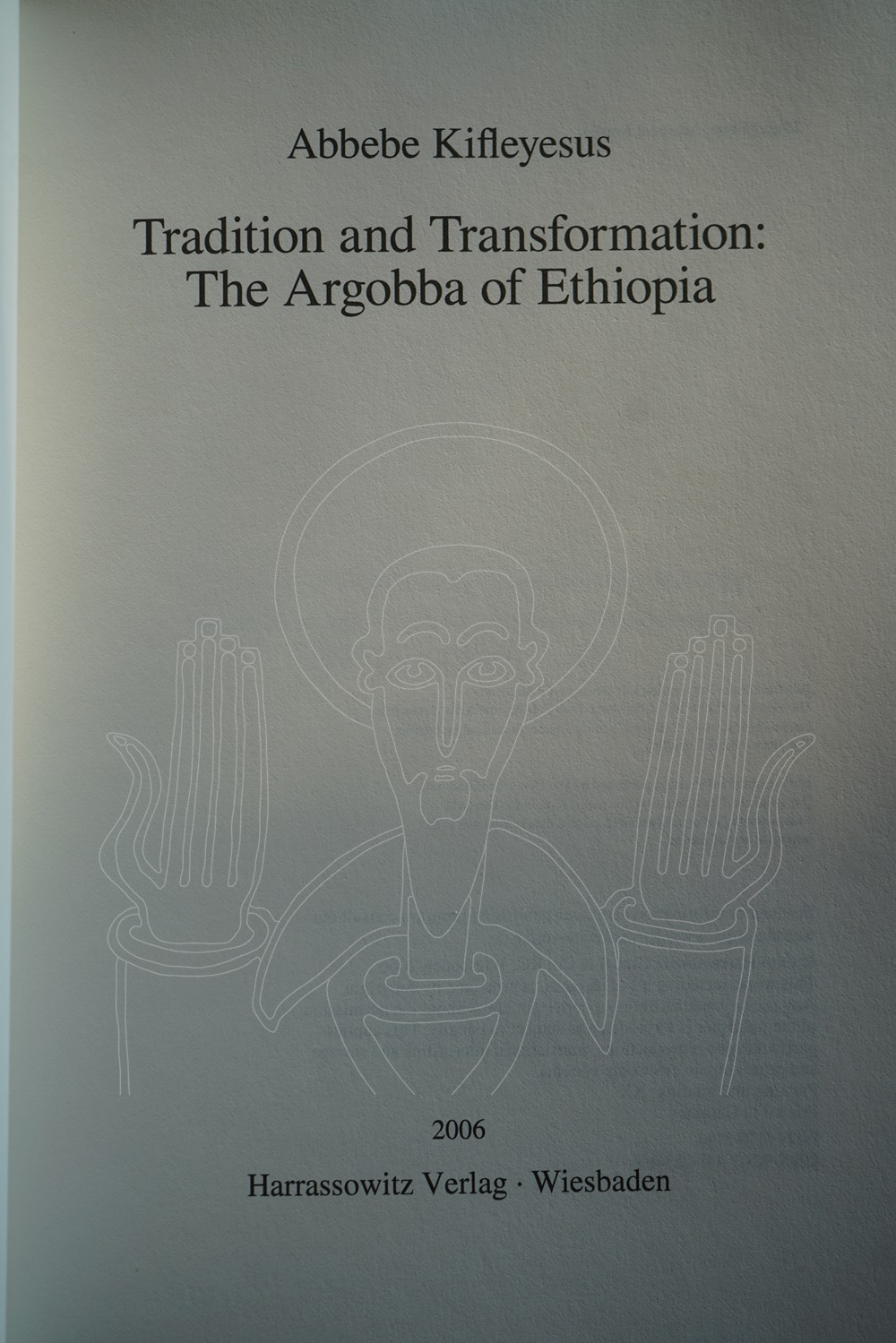Tradition and Transformation: The Argobba of Ethiopia.



Édition
Éditeur : Harrassowitz
Lieu : Wiesbaden
Année : 2006
Langue : anglais
Description
État du document : bon
Reliure : souple
Références
Réf. Biblethiophile : 004708
Réf. UGS : 91000000
Première entrée : -1
COLLATION :
Äthiopistische Forschungen 66, XXV, 295 pages, 2 Ktn.
En savoir plus
Présenté par l’éditeur
The Argobba are an ethnic and religious minority in southeastern Wällo and northeastern Säwa. Despite living in harsh environments and menace from more dominant ethnic groups, they have for centuries maintained their agricultural activity, trader and weaver identity, and religious unity. At present they are undergoing rapid cultural change, and are caught up in a tension between encapsulation and the struggle for the survival of Argobba cultural tradition and political position in what once was a strategic location. This book presents a perceptive historical and cultural analysis of change and continuity, looks at how the Argobba define and redefine their agricultural and commercial ways of living as a response to threats from Oromo migration, Amhara settler penetration and Adal aggression, and examines the past and present condition of Argobba social and economic transformation in north-central Ethiopia.
Tables des matières
List of Maps ………………………………………………………………. ix
Note on Transliteration ………………………………………………….. xi
Acknowledgements ………………………………………………………. xv
Preface …………………………………………………………………….. xxi
Chapter One: Change and Continuity in Argobba Society ……….. 1
Introduction ……………………………………………………………… 1
The Geography and Ecology of Argobba Rural Homelands …………. 21
The Ethnography of the Argobba and their Neighbours ……………… 27
Conclusion ………………………………………………………………… 36
Chapter Two: The Historical Formation and Transformation of Argobba Society between the 9th and 19th Centuries … 39
Historical Y fat …………………………………………………………… 39
Ethnogenesis and Myth of Origin ………………………………………. 41
Historical Geography of Habäša ……………………………………….. 46
Islam in Ethiopia and the Islamisation of the Argobba ………………… 48
The Solomonic Monarchy, the Wälasma Dynasty and
Argobba Society ………………………………………………………. 56
Oromo Population Movements and the Argobba Rural Homelands … 62
Ankobär Administration and the Argobba Rural Homelands ………… 69
Regional Economy and Argobba Commercial Identity ………………. 74
Conclusion ………………………………………………………………… 83
Chapter Three: Transformation of Wälasma Political Positions and Argobba Economic Options …………………… 89
Wälasma and Argobba Social Stratificatio ……………………………… 89
Argobba Saintly Families ………………………………………………… 95
Argobba Tujar Families …………………………………………………. 99
Argobba Peasant Families ……………………………………………….. 105
Slavery and Slaves in Argobba Society …………………………………. 107
Marginalisation of Wälasma Authority …………………………………. 114
The Railway and the Decline of Argobba Commercial Activity ………. 118
Conclusion ………………………………………………………………… 121
Chapter Four: Strategies of Adaptation and Transformation of Argobba Social Institutions ………………………. 125
Settlement Systems as Symbolic Expressions of Locality ……………… 125
Argobba-Adal Frontier Relations ………………………………………. 132
Kinship Relations ………………………………………………………… 136
Custom of Conubium …………………………………………………… 139
Transformation of Kinship and Marriage Relations …………………… 146
Argobba Islamic Traditions ……………………………………………… 157
S fism and the Reality of Argobba Mysticism …………………………. 163
The Šonké Shrine ………………………………………………………… 173
Sheikh Swadiq’s S fi Sanctuary …………………………………………. 176
S ffiyya and Awliya in a Changing Muslim Milieu ……………………. 181
Current Status of Argobba Language Usage …………………………… 188
Linguistic Transformation and Cultural Conservation ………………… 201
Conclusion ………………………………………………………………… 204
Chapter Five: Regional Economic Transformation and Population Migration …………………………………. 209
Argobba Conurban Commercial Culture ……………………………… 209
Entrepreneurship and Patron-Client Relationship …………………….. 217
Ethnic Affiliation and Self-help Organisation …………………………. 220
Argobba Social Networks ……………………………………………….. 223
Conclusion ………………………………………………………………… 226
Chapter Six: Conclusions ………………………………………………. 229
Appendix …………………………………………………………………. 245
References ………………………………………………………………… 247
Index ………………………………………………………………………. 293
Biblethiophile, 07.10.2025